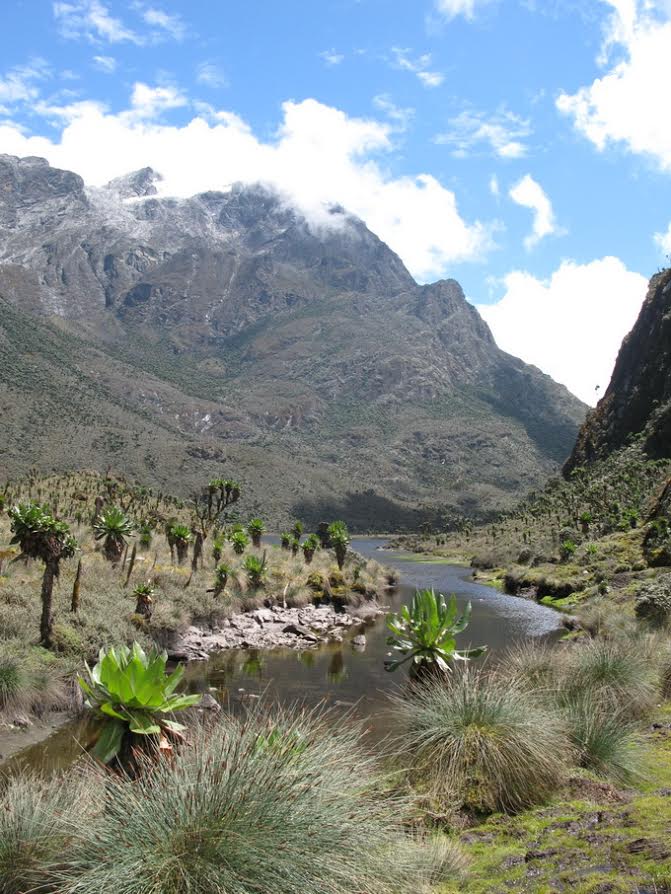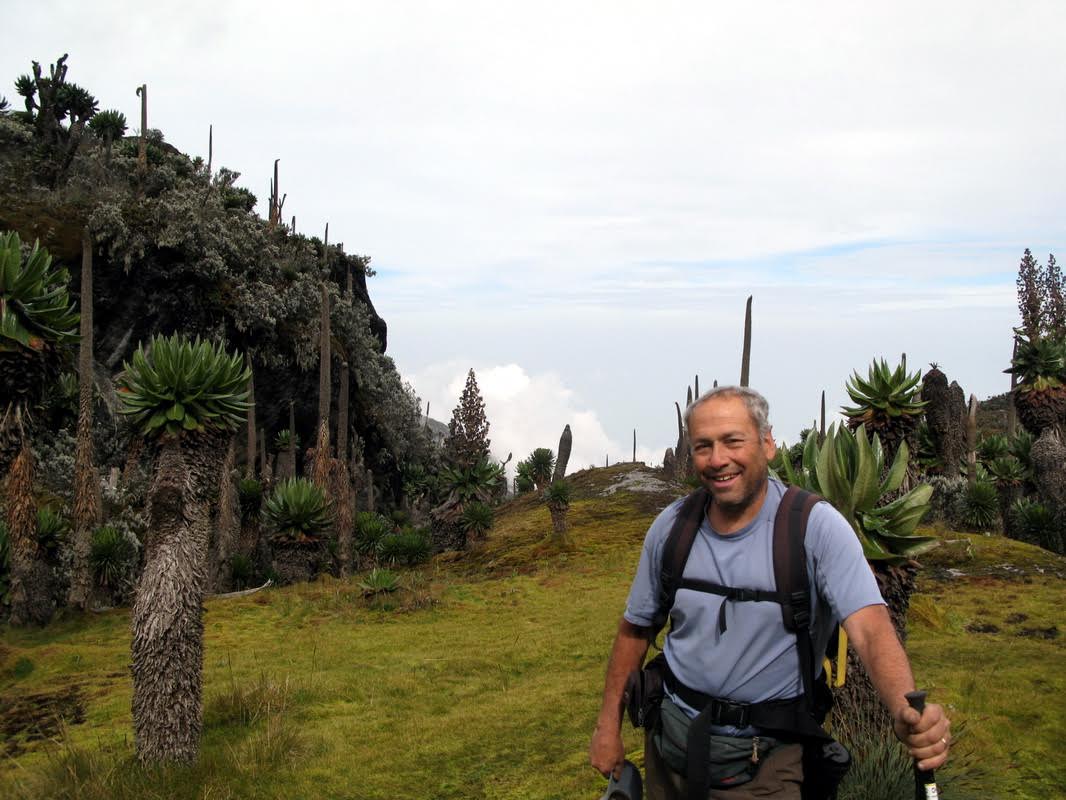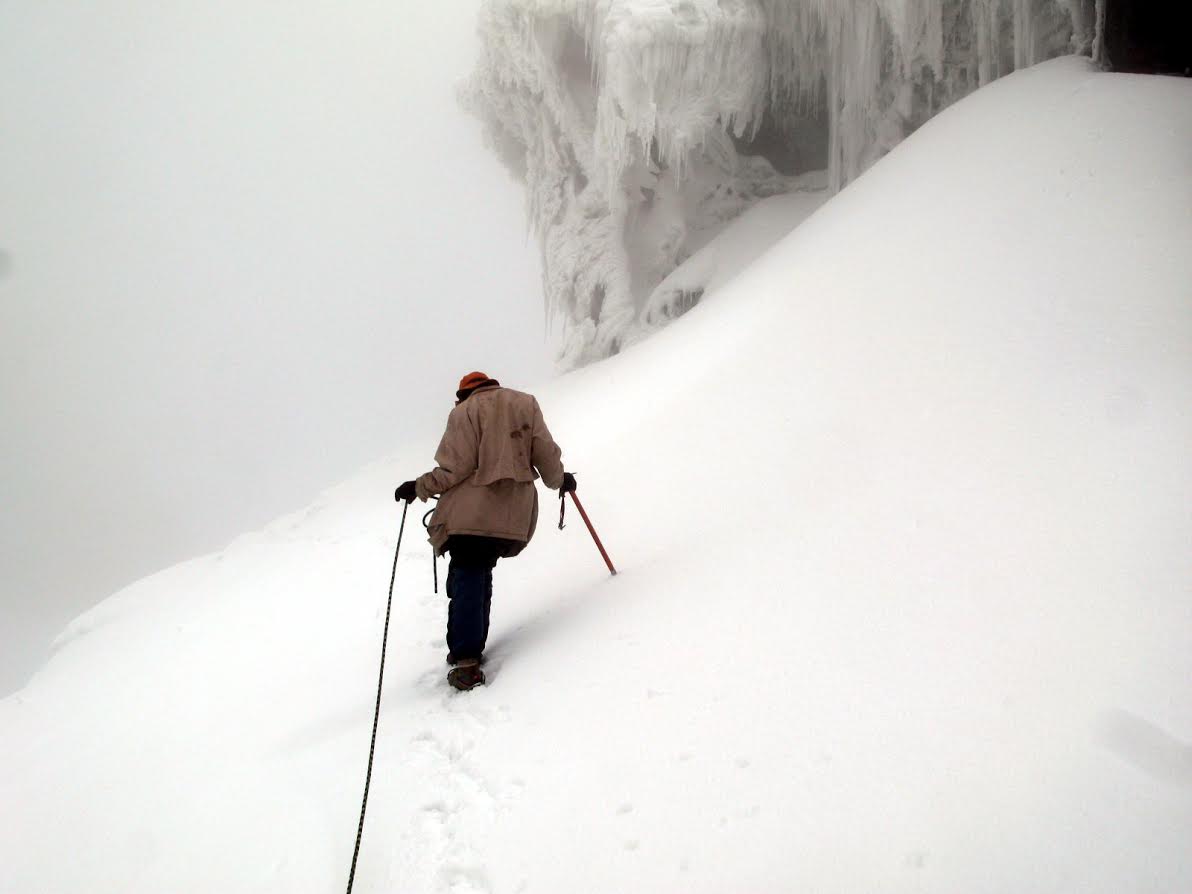Rwenzori Mountains
Key information: Rwenzori Mountains 
- Explore the extraordinary vegetation and landscapes of the fabled “Mountains of the Moon”.
- Demanding walking, but an unforgettable experience.
- Accessed from Uganda.
Walkopedia rating
- Walkopedia rating85
- Beauty34
- Natural interest17
- Human interest3
- Charisma34
- Negative points3
- Total rating85
- Note: Negs: altitude, very rainy.
Vital Statistics
- Length: 70km, up to 7 days
- Maximum Altitude: 5,090m
- Level of Difficulty: Very Difficult
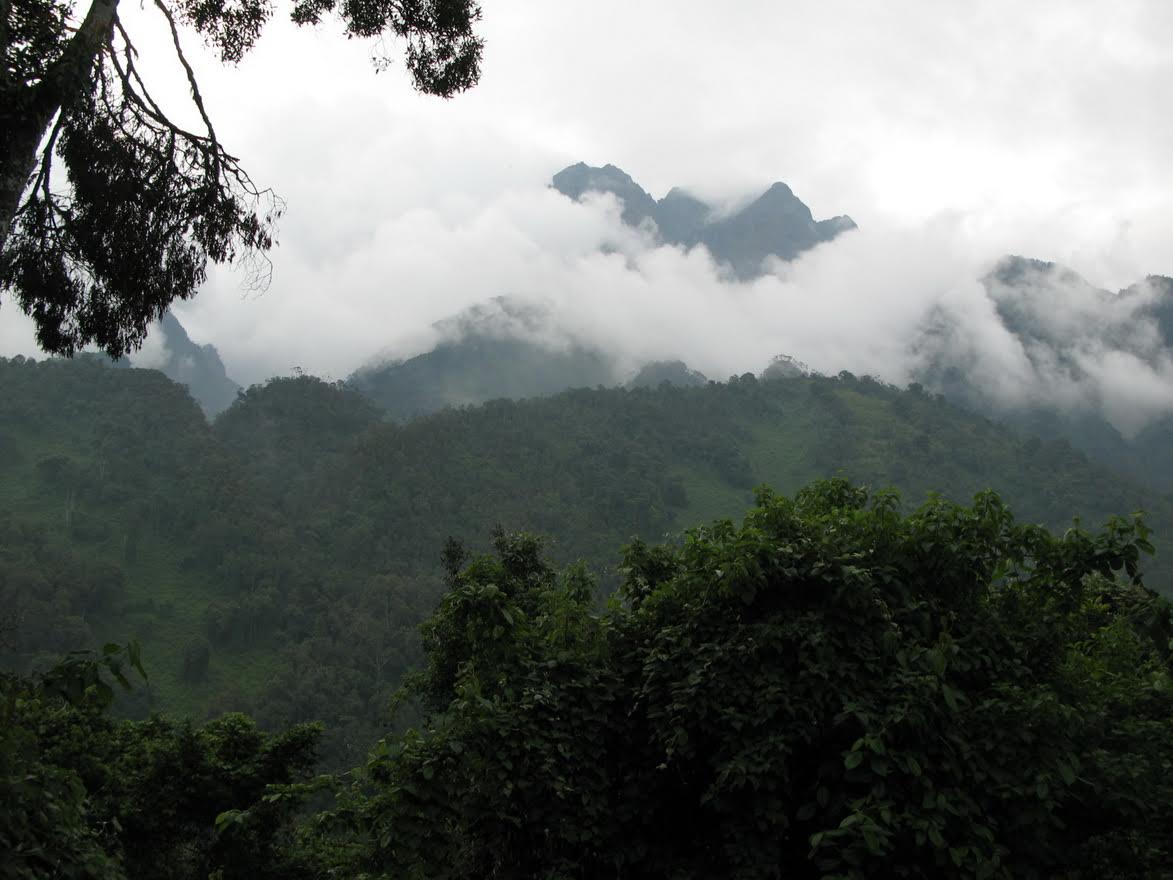
WALK SUMMARY
The Rwenzori Mountains of western Uganda are the fabled “Mountains of the moon” and the true source of the Nile. A UN world heritage site, the mountains stretch some 130km along the border between the Congo and Uganda. While farming and settlement is intense outside the park, the lands within the park are wonderfully pristine.
It is claimed that nowhere else can you enjoy such an extraordinary variety of landscapes and strange, stratified vegetation, right on the equator: the Rwenzori have a marvellous stack of different vegetation zones. Above the thick jungle of the lower slopes, you enter zones of bamboo and giant ferns and cloud forests. The higher you go, the stranger the misty, boggy glacier-carved valleys become: you spend time among giant heather, giant lobelias, groundsels, and so-called everlasting flowers; a particular feature is high bogs with weird bog plants, thick mosses, giant heathers and draping lichens. Above this are tundra and ice fields, glaciers and rocky peaks. And add in fast flowing rivers and magnificent waterfalls throughout.
Unlike East Africa’s other great mountains, the Rwenzori are not volcanic in origin, but the result of a vast uplift - hard to imagine the forces!
The Rwenzori get a lot of rainfall, and their trails are rocky, muddy and often steep. The driest times and the best times to visit are December-January and late June to late August.
Visiting the park from Uganda is safe. Uganda’s government has been stable for years and, while many Ugandans struggle for the basics in life, they are friendly and welcoming to tourists.
Exploration on foot has a long history in the Rwenzori. Henry Morton Stanley (of “Dr. Livingston I presume” fame) was the first westerner to confirm the presence of glaciated mountains on the equator, in 1888. The Duke of Abruzzi led an Italian mountaineering expedition to the Rwenzori in 1906 and named and climbed many of the peaks. Today, about a thousand western tourists visit the Mountains of the Moon annually. Perhaps half that many complete the Central Circuit and perhaps a hundred people scale the high snow and rock to the summits.
One of the most interesting aspects of trekking here is the opportunity to get to know the Bakonjo people – your guides, cooks and porters. They work in the mountains to supplement their cash income.
Day walks and shorter overnighters can be made from the road heads, but it is the 6-7 day Central Circuit which is the thriller here. With the summit at 5,090m this is a serious undertaking, gaining 3,500m in 5 days.
The following description of the Central Circuit is derived from Charles Bookman’s brilliant account (see below). Thank you Charles.
During the colonial era, the Uganda Wildlife Authority in partnership with the Uganda Mountain Club constructed a system of trails and huts known as the “Central Circuit.” All of the major peaks – Mt. Luigi di Savoia, Mt. Baker, Mt. Speke and Mt. Stanley (at 16,700’ the highest peak in Uganda (and the Congo) and the third highest peak in Africa) – can be climbed from the Central Circuit. The trail system and the huts fell into disuse and disrepair during the 1970s and 1980s, when Mt. Stanley was known as Mt. Idi Amin. The trails and huts were rebuilt during the 1990s.
Day 1: The first stage on the Central Circuit is a 3,500’ climb up a ridge alongside and above the Mobuku River. You climb through thick, broken equatorial forest and then through stands of giant ferns. After four hours you reach Nyabitaba Hut, at 8,500’, a large cabin with several bunk rooms and associated dining areas.
Day 2: Descend to cross the Mobuku River at its confluence with the Bujuku River, then climb through bamboo forest and moss-covered trees, arriving at John Matte Hut on the Bujuku River in about 5 hours.
Day 3: The Bigo bogs start a few minutes beyond the John Matte Hut. Sometimes on boardwalks, sometimes mired in mud, rubber boots are the footwear of choice. Sometimes you are among giant heather, sometimes the bog sports giant lobelias, groundsels and everlasting flowers. The bogs lead you to Bujuku Lake and your first view of the high snowfields on Mt. Stanley. After four hours, you reach Bujuku Hut (13,000’), which is also the jumping off place for Mt. Speke (16,043’).
Day 4: takes you above the forest into steep, rocky terrain with unearthly vegetation to the true alpine high country. Camp at Elena Hut, at nearly 15,000’, on the side of Mt. Stanley (16,763’).
Day 5: Summit: The African glaciers really are receding. Elena Hut was constructed in 1951 at the toe of the Stanley ice field. Sixty years later, in 2012, you climb for around an hour, before through a cliff band with the help of a fixed rope to reach a long, striated, rocky plateau, before reaching the snow line. The views are stunning. Rock turns to ice at the beginning of the Stanley plateau. While the climbing is not very technical, there are some steep drop-offs and crevasses. Cross the Stanley glacier, then the Margharita glacier and traverse to the rocky summit approach on a snow-covered ice shelf. Look out from the summit over the Congo and admire the other high peaks of the Rwenzori. Rugged, jagged ice fields flow off the mountain. This is a big day. Leave the hut early, reach the summit late morning, return to Elena Hut in mid-afternoon, then (if energy levels allow) complete one of the most beautiful legs of the circuit, the descent from Scott-Eliot Pass to Kitandara Hut (13,200’). Drop steeply for a couple of hours through a spectacular valley flanked by enormous cliffs.
Day 6: From Kitandara, the route climbs steeply up to 14,000’ Freshfield Pass. The pass is lush with green vegetation, and offers stunning views of the surrounding peaks, as well as views into the Congo. You then make a series of steep, cliffy, colorful descents that take you in one day from the 14,000’ pass back to Nyabitaba Hut at 8,500’, thus completing the Central Circuit. The steep descent offers some of the finest scenery in the Rwenzori. Lush, muddy, rocky, and wildly colorful, it follows streams running down chutes next to cliff bands. Enjoy stunning waterfalls and cascades. The route then opens into a wide valley flanked by Mt. Baker on the left and a monstrous rock outcropping on the right. Lobelia covers the valley floor. You will need to hop from one tuft of marsh grass to another.
Day 7: Return to the roadhead.
This is described by Claes Grundsten, who knows what he is talking, about as “the most taxing trek you can imagine”.
Have a look at the dreaded TripAdvisor so you may get good, current views on this walk.
We want to give more. Please help us by making suggestions and sending photos! Thank you!
OUR FRIENDS' EXPERIENCES
Account by Charles Bookman
Uganda’s Rwenzori Central Circuit: Hiking on the Equator.
The bog stretched to the horizon. Footprints of the dikdik, a miniature antelope wove around giant lobelia plants. Snow capped peaks beckoned. It was a fine spring-like day at 13,000’ in the Rwenzori Mountains of western Uganda, the fabled “Mountains of the moon” and the true source of the Nile. A UN world heritage site, the Rwenzori mountains, stretch some 80 miles along the border between the Congo and Uganda. While farming and settlement is intense outside the park, the lands within the park are respected by the people and are coherently managed.
Moreover, important for tourists, visiting the park is safe. Uganda’s government has been stable for years and while Ugandans struggle for the basics in life, they are friendly and welcoming to tourists.
The Rwenzori get a lot of rainfall, as much eight feet of rain a year! The driest times and the best times to visit are December-January and late June to late August.
Hiking has a long history in the Rwenzori. Henry Morton Stanley (of Dr. Livingston I presume fame) was the first westerner to confirm the presence of glaciated mountains on the equator, in 1888. The Duke of Abruzzi led an Italian mountaineering expedition to the Rwenzori in 1906 and named and climbed many of the peaks. The British have always enjoyed mountain walks and during the colonial era, the Uganda Wildlife Authority in partnership with the Uganda Mountain Club constructed a system of trails and huts known as the “Central Circuit.” All of the major peaks—Mt. Luigi di Savoia, Mt. Baker, Mt. Speke and Mt. Stanley (at 16,700’ the highest peak in.....
READ MOREYour comments on this walk, your experiences and suggestions, and your photos are very welcome. Where appropriate, you will be credited for your contribution.
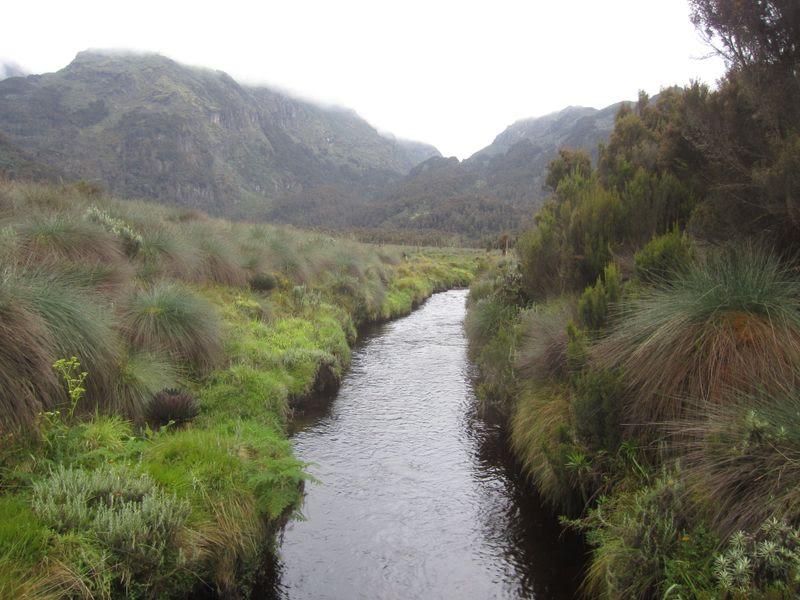
We have a lot of helpful practical information and tips about this walk, covering everything from the best books and maps, to timing and weather, geting there, possible problems, whether you need a guide and where to find them, and useful websites. This section is only open to members.
Membership is FREE AND JOINING TAKES 30 SECONDS. To login or sign up click here
Safety and problems: All walks have inherent risks and potential problems, and many of the walks featured on this website involve significant risks, dangers and problems. Problems of any sort can arise on any walk. This website does not purport to identify any (or all) actual or potential risks, dangers and problems that may relate to any particular walk.
Any person who is considering undertaking this walk should do careful research and make their own assessment of the risks, dangers and possible problems involved. They should also go to “Important information” for further important information.
Anyone planning an expedition to this place should see further important information about this walk.
Safety and problems: All walks have inherent risks and potential problems, and many of the walks featured on this website involve significant risks, dangers and problems. Problems of any sort can arise on any walk. This website does not purport to identify any (or all) actual or potential risks, dangers and problems that may relate to any particular walk.
Any person who is considering undertaking this walk should do careful research and make their own assessment of the risks, dangers and possible problems involved. They should also go to “Important information” for further important information.
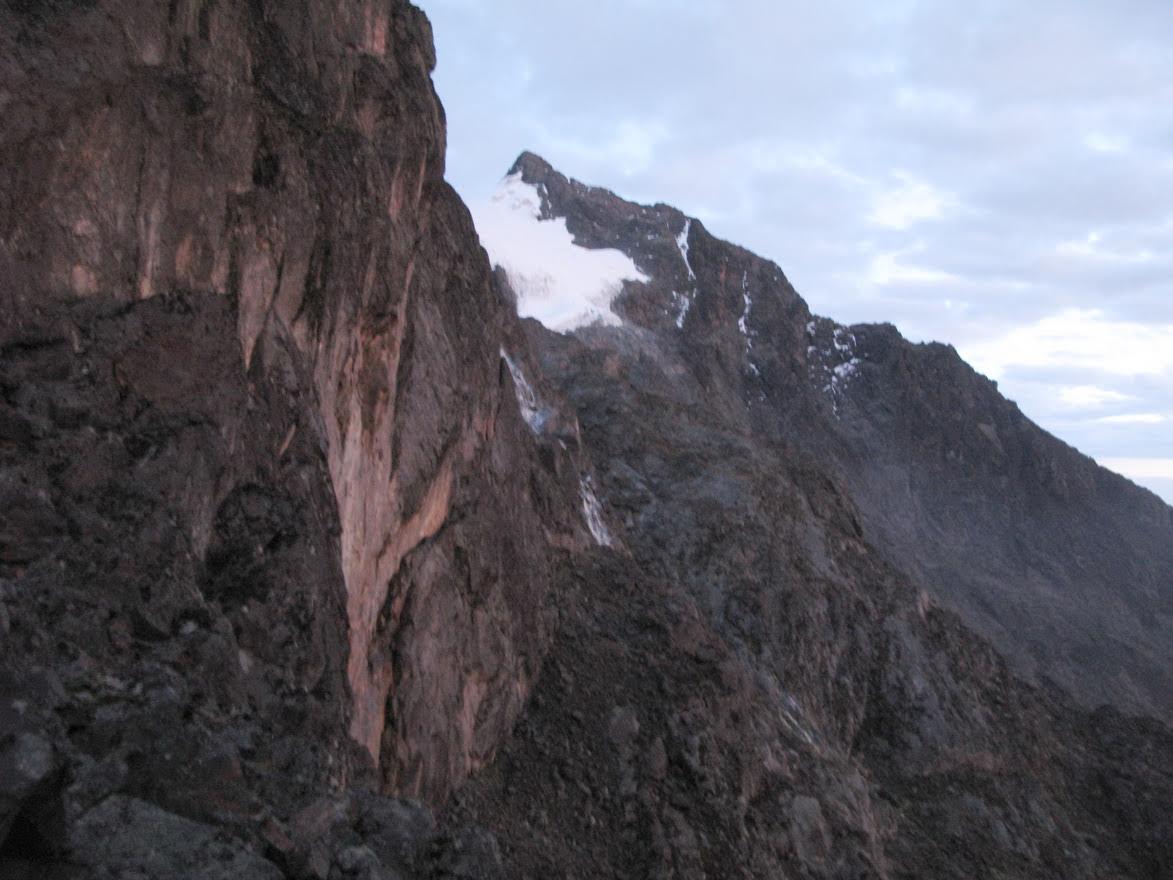
OTHER ACCOUNTS
share your experiences
Add your experiences, suggestions and photos. We would be delighted to receive your writing and ideas (which will be attributed appropriately where published).
Anyone planning an expedition to this place should see further important information about this walk.
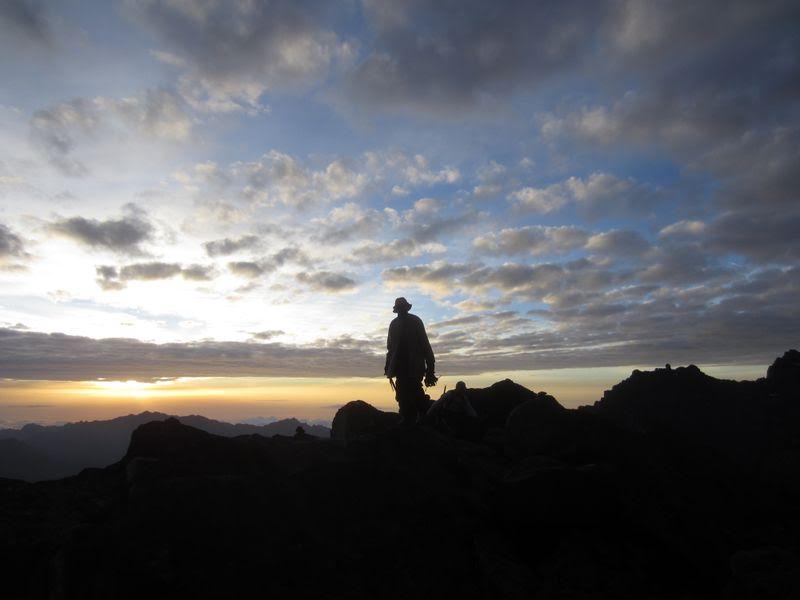
Responsible travel matters, a lot. How you travel will make a real difference - for better or worse. PLEASE consider this when making plans. Read more



